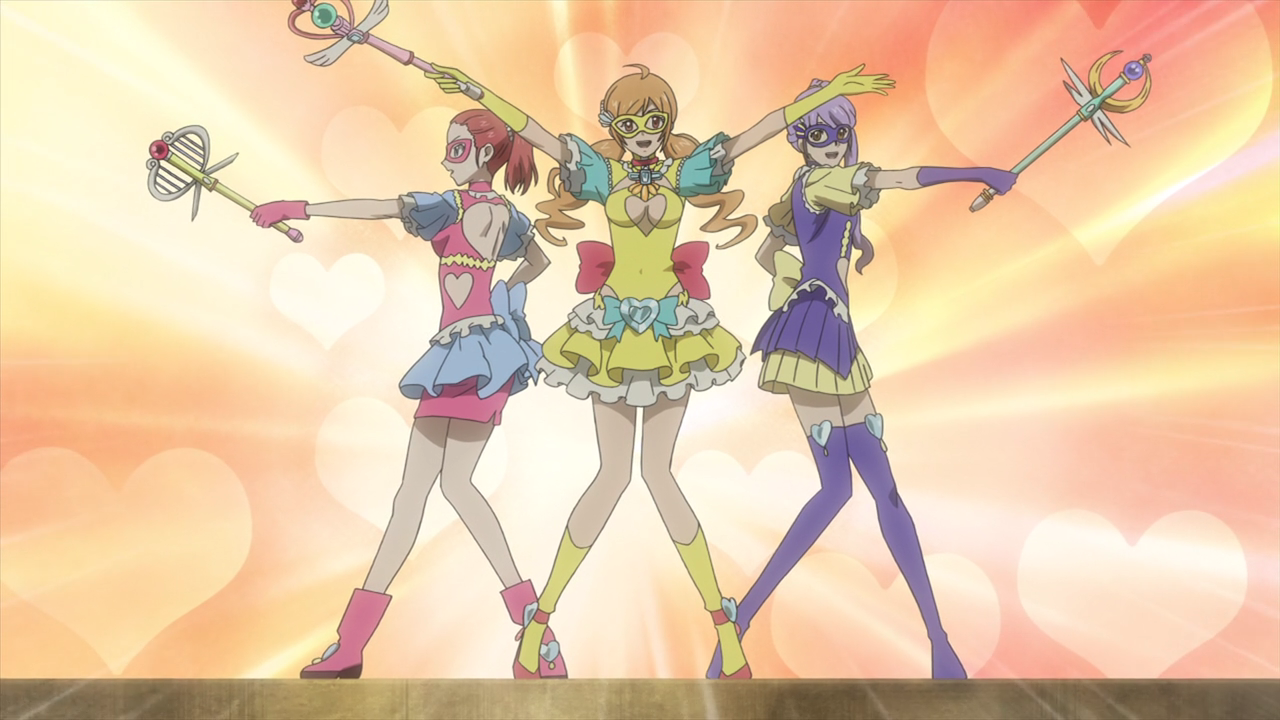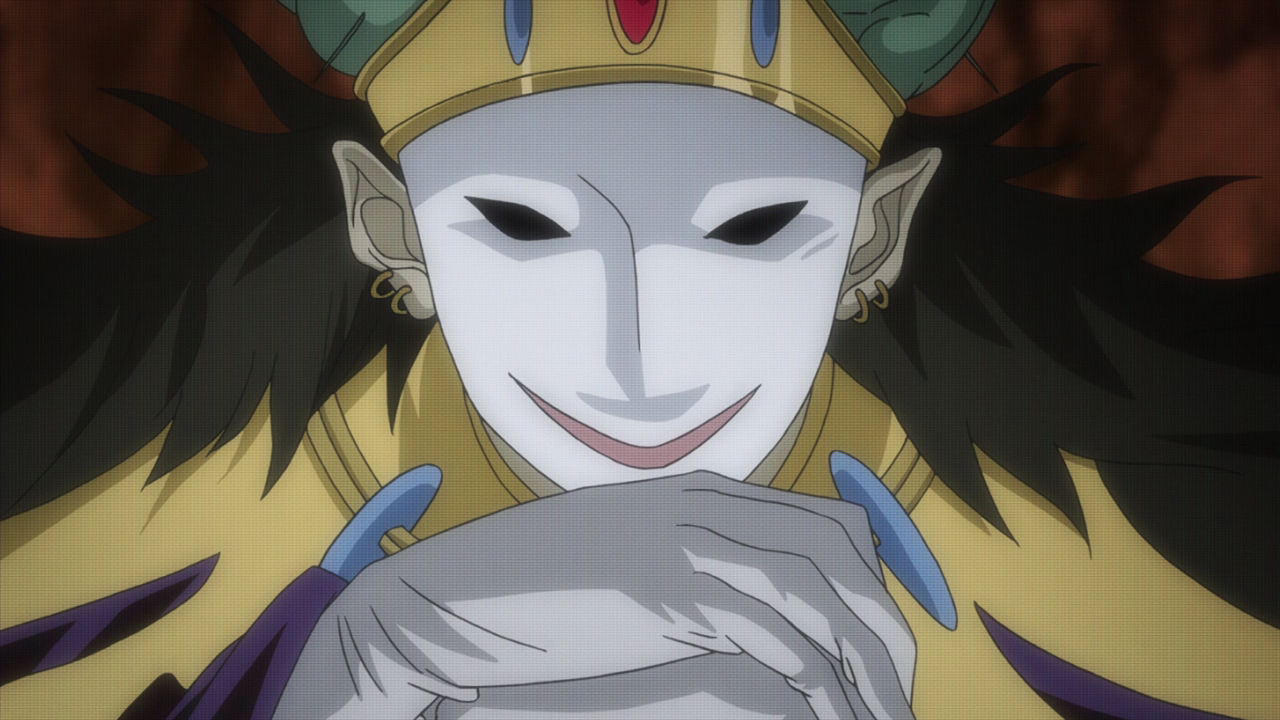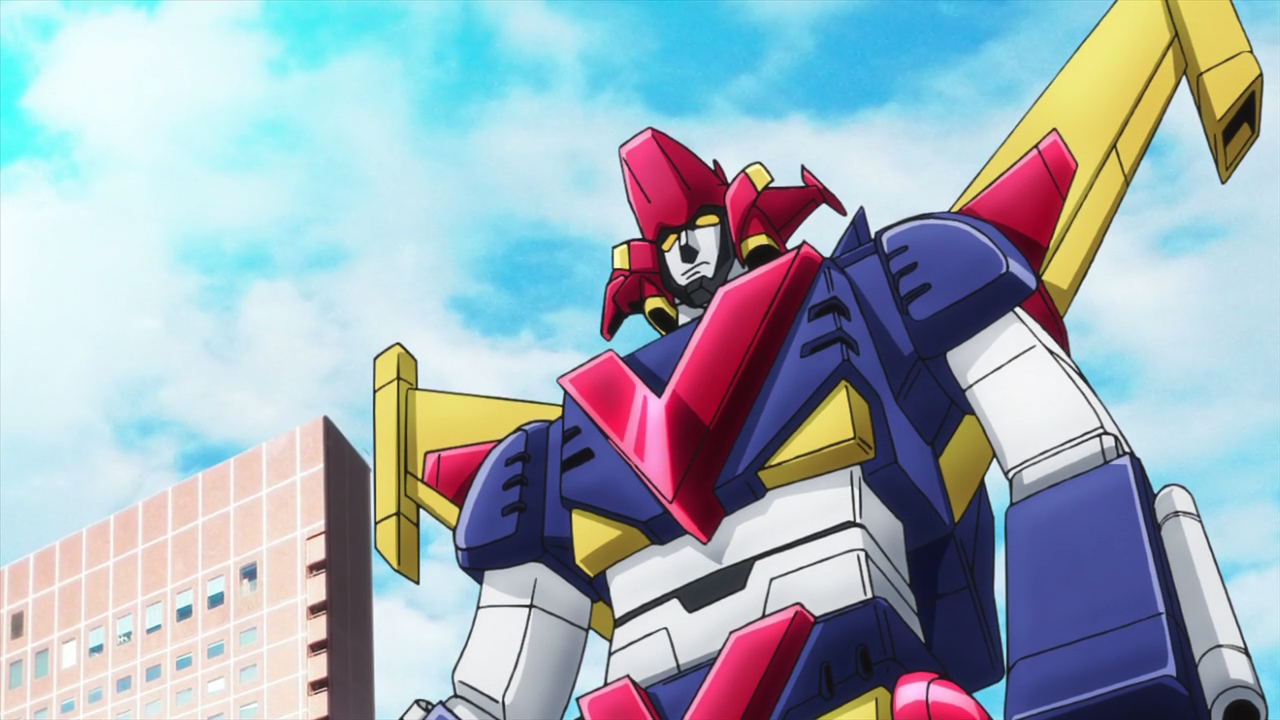Samurai Flamenco follows the story of 19-year old male idol Masayoshi Hazama, a man raised on a diet of the (fiction-within-a-fiction) tokusatsu superheroes Red Axe, Harakiri Sunshine and more. Wishing to become the superhero he always dreamed of, Hazama takes to the streets under the guise of 'Samurai Flamenco' (a hero invented by his late grandfather). With no superpowers or hi-tech gadgets, it isn't long before he's drawing attention to himself and meets police officer Hidenori Gotō. The two strike up a strong friendship despite the amount of trouble Samurai Flamenco's antics bring upon Gotō.
 |
| You can almost smell the sexual tension |
But is isn't long before Samurai Flamenco becomes a media sensation, and another hero - the brutal Flamenco Girl arrives on the scene. Not long after that Hazama discovers that the super villains of his favourite TV shows aren't so fictional after all, as an evil organisation bent on world domination arrives on the scene. Teaming up with new allies to gain hi-tech weapons, Samurai Flamenco faces new challenges that take from a lone hero into part of a 5-piece 'Sentai' team against mutants, aliens and beyond.
There are main two aspects that make up the core of Samurai Flamenco (or 'Samumenco' if you want to go into nicknames) - its characters and its setting. Character-wise we have Hazama as the somewhat naive hero, who believes in truth and justice in his purest form. He's incredibly dense, but his heart is always in the right place making him a hero that's very easy to root for. This plays off quite well against the more deadpan Gotō, who is in reality perhaps the show's deepest character (a fact that is sorely underplayed until a reveal in the final few episodes). Samurai Flamenco also features a really strong supporting cast, made up of the violent Mari and her 'Miracle Mineral Muse' idol mates Mizuki and Moe, Hazama's manager Sumi Ishihara, unscrupulous journalist Akira Konno and more. None of them outside of MMM get a huge deal of character development (the Flamengers names are almost completely forgettable outside being colour puns), but some of them certainly leave an impression. The larger than life Joji Kaname aka Red Axe being among the highlights.
 |
| Fighting evil by moonlight, kicking balls (also) by moonlight... |
Meanwhile the setting is something the writers clearly went wild with as a way of proudly displaying their love for Japan's premier superhero shows. With a Kamen Rider namedrop in the opening scene, you should have a pretty good idea of what you're in for. That being said, it's the only time the show references a real-life superhero show, with the rest being made of new characters that are heavily based on existing ones (and would look brilliant as toys if some company was prepared to give the show a chance). But even with its huge range of made up superheroes, the writers' awareness of the different kinds of Japanese superhero and the tropes that accompany them are right on the mark. The show gets pretty much every different type in there, starting Hazama as a Kick-Ass style hero before introducing Flamenco Girl (later Flamenco Diamond) as Sailor Moon meets Hit Girl. From there Hazama goes full on Kamen Rider before joining his own Sentai team (complete with giant robot), being blown up to Ultraman size before bringing things right back to where they started.
 |
| Super villains aren't just litterers and drunks |
However Samurai Flamenco's biggest flaw is that it takes its own brand of parody so far that it forgets that it needs to have a cohesive plot. You could argue that recent popular parodies such as Akibaranger were equally off the wall, but at the same time there was an obvious method to their madness and was catered to a more specific demographic. Samurai Flamenco was a show that aired in Japan's most prestigious anime slot, something that was once had by the likes of Eden of the East and AnoHana. Naturally it would catch the attention of a lot of anime viewers, and should at least take care in its story to accommodate them as well as the tokusatsu fanatics. However the amount of bizarre twists and turns the show takes are potentially enough to deter more casual viewers, and its casual handwave of intriguing plot threads (where all these villains have suddenly come from, what is the relevance of everyone bearing the name 'Flamenco') are both disappointing. To put it succinctly into a single sentence - Samurai Flamenco is a show where the journey is far more satisfying than the destination.
 |
| Toy when? Someone? Please? |
So because of this, Samurai Flamenco is a bit of a difficult show to place a final rating on. If you're a tokusatsu geek like I am, you'll enjoy what is a clear love letter to the tokusatsu heroes of old (and new) in a show that admittedly is flawed but loveable nonetheless. However if you're a more casual anime-goer that's simply checking it out for its reputation or the mention of superheroes, you may find yourself a little more confused and disappointed by those sudden u-turns in story telling.




No comments:
Post a Comment